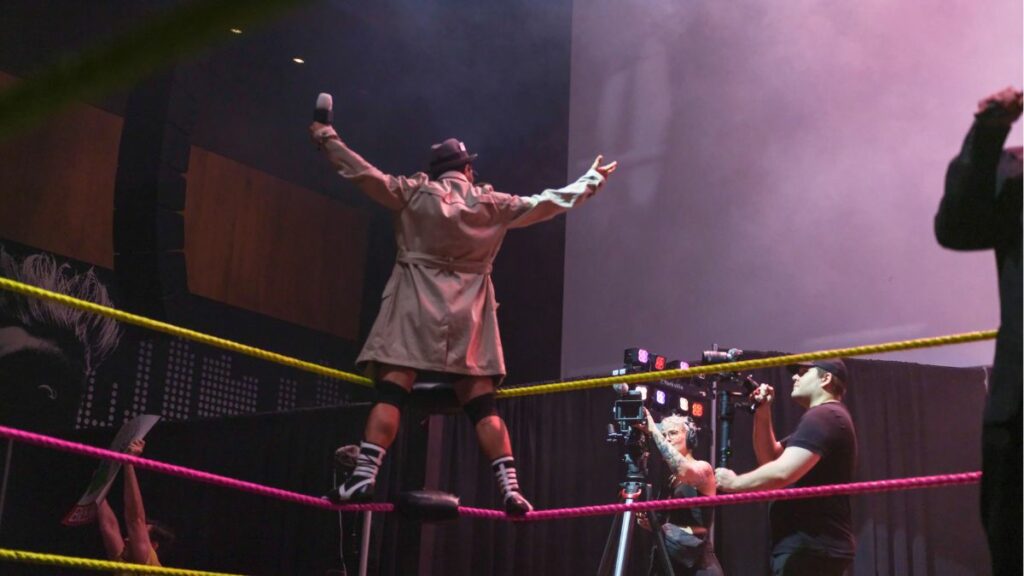CBC Gem’s newly released documentary, Making Kayfabe: The Private Lives of Indie Wrestlers, is a different version of Here Comes the Boom in a wrestling setting.
Instead of raising money through mixed martial arts like Kevin James did in 2012’s Here Comes the Boom filmmaker and journalist Omar Mouallem counters the previously-released dark and grim wrestling products like The Wrestler and The Dark Side of The Ring by documenting his journey of being a wrestler — and it did just that.
In the documentary, Mouallem tries to become a wrestler in five months. It looks at his life after recently separating from his wife, the lives of indie wrestlers, the birth of his character “Fake Nooz Neville” and the only match he will have in his career. The featured indie wrestlers are Michael Richard Blais — who helped with the majority of his training, Spencer Love, Taryn “From Accounting” Kroll and Ahmed Keirei.
These behind the scenes were a nice touch. It showed the dedication and passion someone would need to become a successful wrestler.
For Blais, it’s nice to see that after not getting an offer from the WWE following a tryout, he realized that wrestling for a major promotion is not the be-all, end-all for him. For Keirei, the passion he had built from his family’s upbringing of watching wrestling as a child motivated him to become one. You can see the founder and promoter, Spencer Love, give him advice before starting his training. Then with Kroll, you see her life as a teacher and mention that even her co-workers support her.
The way Mouallem made the film feel uplifting was all done through the production. The music choice only consisted of upbeat songs that matched the action scenes. Each moment had bright lighting, which helped viewers not only see but stay engaged. You could see his hard work but it always seemed encouraging as the trainer and fellow indie wrestlers took care of him and cheered him on through the process.
I do have some critiques for the film. It was too short and needed to show a more significant portion of Mouallem’s training. How did he develop his cardio? Did he change his diet? Did he have to work out any specific muscle group? How long was each training session? Did Mouallem even get calluses?
The film was good but short. It was only 44 minutes. There is an extended version that includes the making of his attire but even then I had hoped for a longer documentary. The exploration of how he found Love Pro Wrestling could have been added, or how difficult it was. In the previous article, Mouallem said there were rivalries between different promotions, preventing his original idea of the film, and it would give a good insight into how indie shows are trying to grow and why even major companies like WWE and AEW don’t do crossover events, let alone your local promotions.
Seeing a bigger portion of his training would have provided more authenticity to the film. It would show what he struggled with the most and overcoming it, adding to the uplifting take he wanted.
Overall, the Making Kayfabe was very enjoyable. It was easy for viewers to consume and left me wanting more — clearly.
Making Kayfabe: The Private Lives of Indie Wrestlers is available on CBC Gem.
RELATED LINKS
- Feb. 23, 2024 – ‘Making Kayfabe’ turns journalist into wrestler
- Omar Mouallem social media: Website * X
- Love Pro Wrestling website
Making Kayfabe: The Private Lives of Indie Wrestlers
Summary
The documentary created by Omar Mouallem gives a different take on how wrestling is behind the scenes. He uses his journey to display the type of wrestling he grew up watching.

